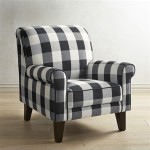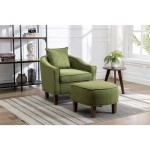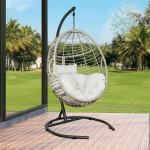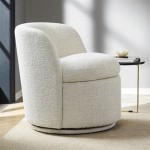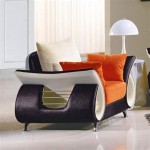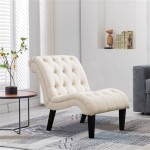The Enduring Appeal of the Mid-Century Leather Armchair
The mid-century modern design movement, spanning roughly from the 1940s to the 1960s, left an indelible mark on architecture, furniture, and graphic design. Characterized by clean lines, organic shapes, and functional aesthetics, mid-century modernism sought to create accessible and stylish pieces for a post-war world. Among the most iconic and enduring examples of this design philosophy is the mid-century leather armchair. These chairs, often featuring sleek silhouettes, quality materials, and a focus on comfort, continue to be highly sought after by design enthusiasts and collectors today.
The design legacy of the mid-century leather armchair is rooted in several key influences. The Bauhaus school, with its emphasis on functionality and simplicity, played a crucial role. Scandinavian design, known for its use of natural materials and ergonomic forms, also contributed significantly. Furthermore, technological advancements in manufacturing allowed designers to experiment with new shapes and materials, leading to innovative designs that pushed the boundaries of traditional furniture making. The result was a generation of armchairs that perfectly embodied the mid-century modern aesthetic: elegant yet practical, comfortable yet stylish.
The widespread popularity and lasting appeal of the mid-century leather armchair can be attributed to a combination of factors, including its timeless design, enduring quality, and versatility. The chair's clean lines and minimalist aesthetic allow it to seamlessly integrate into a variety of interiors, from minimalist modern spaces to more eclectic and traditional settings. Moreover, the use of high-quality leather ensures durability and longevity, making these chairs a worthwhile investment. The comfort they provide, often enhanced by features like curved backrests and padded armrests, further contributes to their enduring appeal.
Design Characteristics and Key Features
Mid-century leather armchairs are distinguished by a set of characteristic design features that define their aesthetic. One of the most prominent is the emphasis on clean lines and simple forms. The chairs generally avoid excessive ornamentation, instead relying on the inherent beauty of the materials and the elegance of their proportions. The frames are often made of wood, typically featuring tapered legs and exposed joinery, showcasing the craftsmanship of the piece. These wooden frames provide a sturdy foundation for the upholstered seat and backrest.
The upholstery is typically leather, chosen for its durability, luxurious feel, and ability to age gracefully. Different types of leather, such as top-grain or full-grain leather, may be used, each with its own unique characteristics and visual texture. The leather is often dyed in neutral colors, such as brown, black, or tan, reflecting the mid-century modern preference for natural tones. However, bolder colors, such as olive green or mustard yellow, can also be found, adding a touch of retro flair.
Ergonomics plays a significant role in the design of these armchairs. The backrests are often curved to provide lumbar support, and the seats are typically padded for comfort. Armrests are another common feature, offering a place to rest the arms and further enhance the overall comfort of the chair. The overall design is intended to promote relaxation and provide a comfortable seating experience, making these armchairs ideal for lounging, reading, or conversation.
Materials and Construction
The quality of the materials and the meticulous construction techniques employed in the making of mid-century leather armchairs contribute significantly to their durability and longevity. The use of high-quality wood for the frame is crucial for ensuring the chair's structural integrity. Hardwoods, such as walnut, teak, and oak, are commonly used for their strength, durability, and attractive grain patterns. The wooden frame is typically joined using traditional woodworking techniques, such as mortise-and-tenon joints or dovetail joints, which provide exceptional strength and stability.
The leather used for the upholstery is another key factor in determining the quality of the chair. Top-grain leather, which retains the natural grain pattern of the hide, is a popular choice for its durability and luxurious feel. Full-grain leather, the highest quality leather available, is even more durable and develops a beautiful patina over time. The leather is carefully selected and tanned to ensure its suppleness and resistance to wear and tear.
The upholstery process itself is a skilled craft, requiring precision and attention to detail. The leather is carefully cut and sewn to fit the frame, and then tightly stretched and secured in place. Padding is added to the seat and backrest to provide cushioning and support. The entire process is designed to create a chair that is not only visually appealing but also comfortable and durable enough to withstand years of use. The combination of high-quality materials and expert craftsmanship ensures that these armchairs are built to last.
Iconic Designers and Influential Models
The mid-century modern era produced a wealth of talented designers who created some of the most iconic and influential leather armchairs. Charles and Ray Eames, a husband-and-wife design team, are renowned for their innovative use of materials and their focus on functional design. Their Eames Lounge Chair and Ottoman, with its molded plywood shells and supple leather upholstery, is considered a masterpiece of mid-century modern design.
Arne Jacobsen, a Danish architect and designer, is another influential figure in the mid-century modern movement. His Egg Chair, with its distinctive organic shape and comfortable leather upholstery, is a timeless classic. The Egg Chair's sculptural form and innovative use of materials made it an instant icon.
Hans Wegner, another prominent Danish designer, is known for his mastery of wood and his ability to create elegant and functional furniture. His Papa Bear Chair, with its distinctive armrests that resemble bear paws, is another iconic example of mid-century leather armchair design. These designers, among many others, shaped the aesthetic of the mid-century modern era and created armchairs that continue to be admired and sought after today. Their designs represent a perfect balance of form, function, and craftsmanship, embodying the enduring appeal of the mid-century leather armchair.

Fillmore Mid Century Leather Chair West Elm

Arcot Mid Century Brown Leather Armchair With Solid Oak Frame So Home La Redoute

Mid Century Leather Show Wood Chair West Elm

Hereford Mid Century Leather Armchair Pavilion Broadway

Contemporary Mid Century Modern Leather Chairs Article

Mid Century Danish Black Leather And Wood Lounge Chair By Grete Jalk 1955 For Sale At Pamono

Truman Brown Leather Armchair Accent Chair

Glitzhome 30 00 In H Brown Mid Century Modern Coffee Leatherette Accent Armchair With Walnut Ruberwood Frame 2001100037 The Home

Mid Century Modern Show Wood High Back Leather Chair West Elm

Mid Century Modern Scandinavian Leather Armchair The Design Ark
